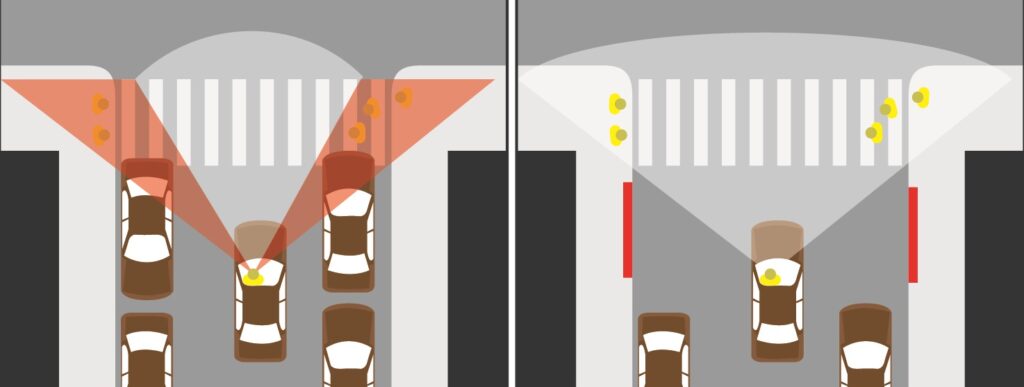At a Glance
Safe Crossing is a project based on a crowdsourced effort to assess if the setup of pedestrian crossings in Luxembourg-City complies with the Code de la route (Highway Code). Specifically, users were asked to analyse whether there were parking spots within five metres of a pedestrian crossing, which is prohibited according to the Code de la route.
Results
- A total of 1787 pedestrian crossings were analysed.
- The setup of 475 (27%) crossings is likely in violation of the Code de la Route
- For 162 (9%) crossings, no assessment was possible
This means that roughly a third of all pedestrian crossings in the City of Luxembourg may not be set up according to the rules of the law, despite the fact that such flaws had already been brought to attention of city by an audit on pedestrian security in 2015.
Why remove parking places close to pedestrian crossings?
It is safer for pedestrians.
“Daylighting” is a simple pedestrian safety measure achieved by removing parking spaces adjacent to a pedestrian crossing and or intersection, increasing visibility for pedestrians and drivers and minimizing conflicts.
Daylighting is beneficial for everyone, but is especially helpful to children, who often cannot see, or be seen by, oncoming traffic.

What’s ZUG’s motivation for this project?
Luxembourg City is a beautiful, vibrant city. However, it is also a city with a lot of individual, motorised traffic and therefore suffers from a lot of the disadvantages that come with the latter: congestion, noise, pollution – and also a high risk for pedestrians and cyclists.
Every human being that is hurt on our streets is one too many – and city leaders should do everything in their power to protect people as they walk or cycle. However, it turns out that when it comes to one of the most basic infrastructures for soft mobility, pedestrian crossings, there has been a lot of “creativity” to squeeze in more parking spots at the expense of pedestrian safety.
Most often, this creativity manifests itself as starting the kerbside parking spots already well before the 5 metre minimum distance from the pedestrian crossing, but only letting the designated lay-by reach the full width exactly at the 5 metre mark. This is technically allowed by the Code de la Route, but on many pedestrian crossings this flexibility is stretched to the absolute maximum.
On a great number of pedestrian crossings, there is simply no minimum distance left at all. On other occasions, and most often in 30 km/h zones, there are no markings on the ground – neither for pedestrians, nor for cars. But in practice this means that drivers will take up every square inch for parking, disregarding that they impede visibility for pedestrians and cyclists but also other drivers.
